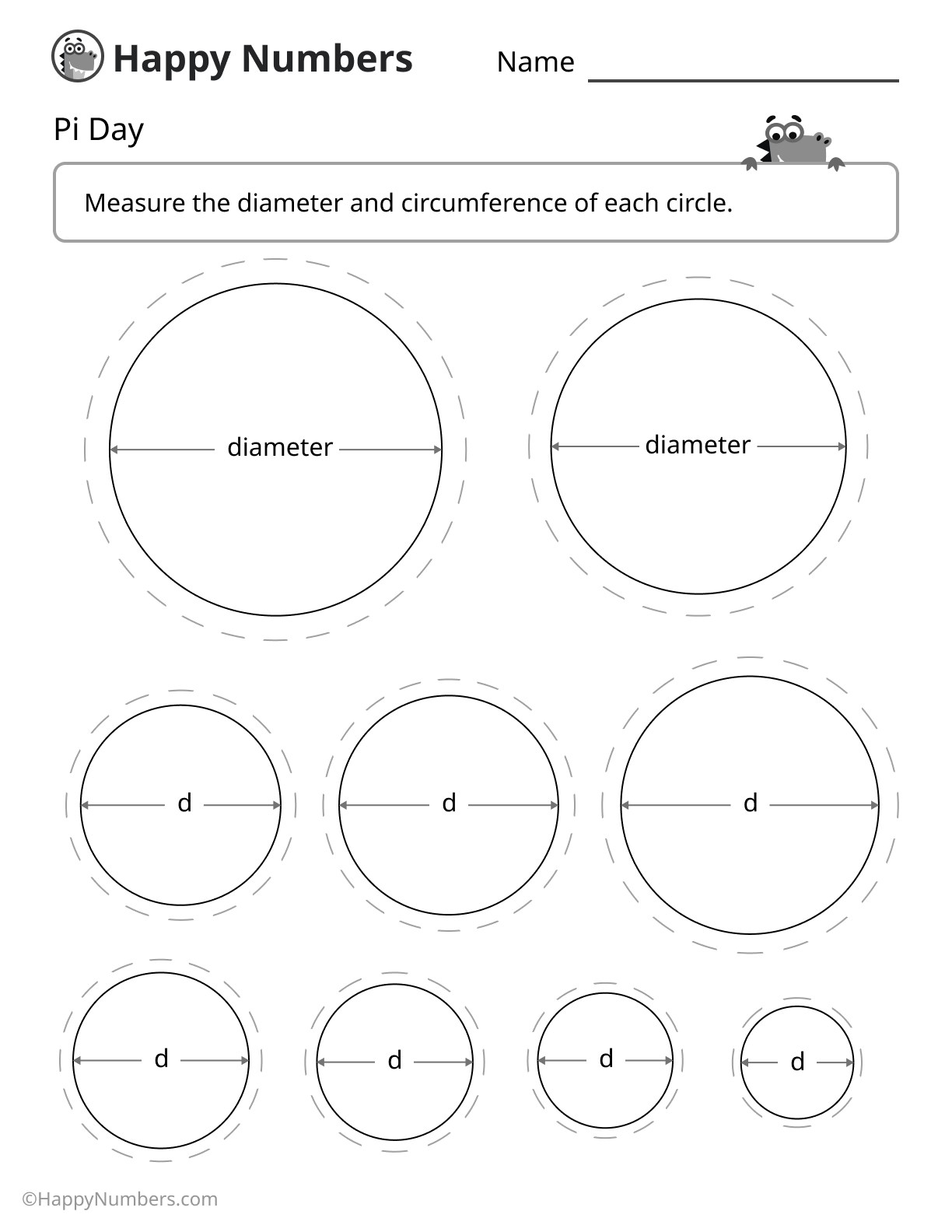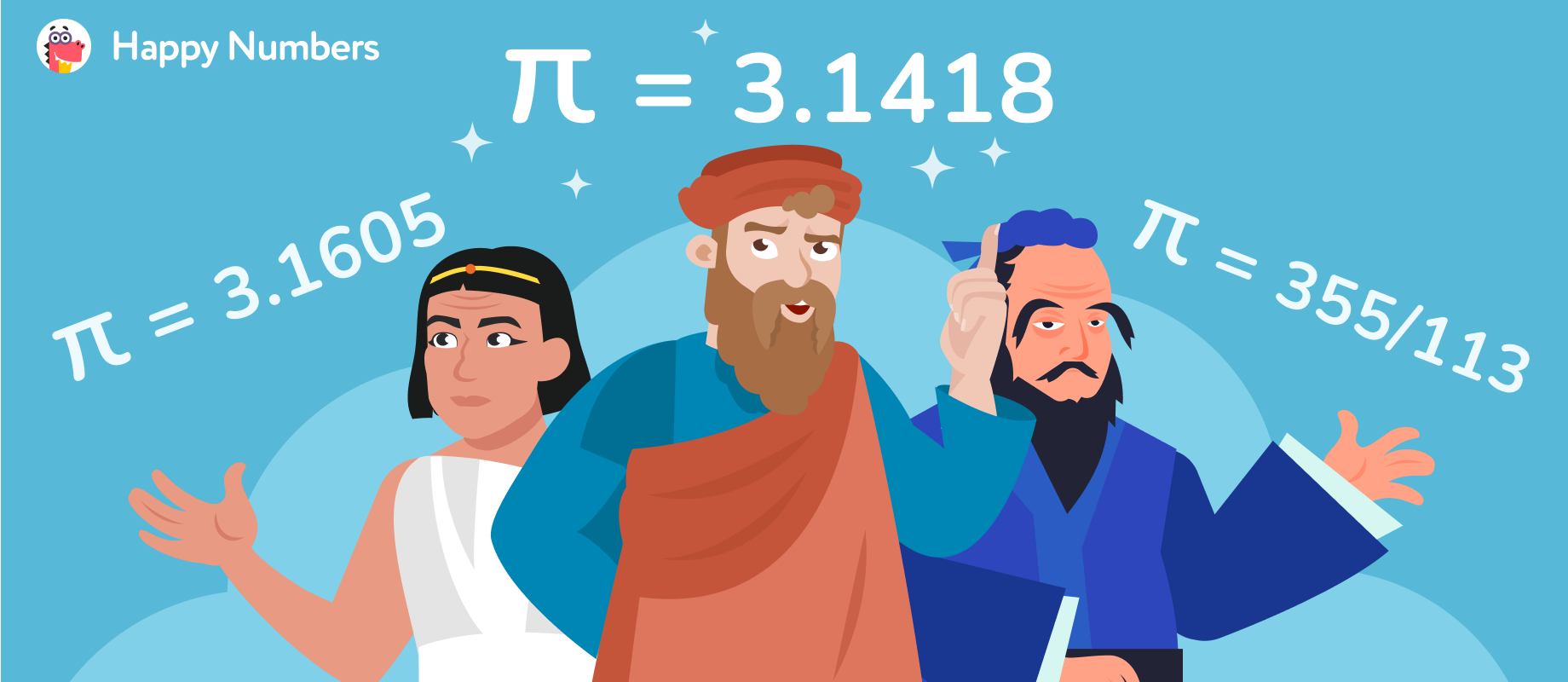Top Pi Day activity ideas for elementary students
Pi concept: first introduction
One of the best ways to nurture love for math in your students and ward off any possible math anxiety in the future is to capitalize on opportunities like this to introduce complex topics in an enjoyable way! Then, in the later years when tricky concepts become more common, students have a strong foundation to start from. So, why not celebrate Pi Day and have some fun?
For a hands-on introduction to the concept of pi, first prepare some different-sized paper circles (or paper plates), strings and scissors, and ask students to measure the circumference of the paper using the string. Afterward, let them take this string circumference and stretch it across the diameter of the circular object and ask them to cut as many string diameters as they can from the original piece. You could also allow students to use a calculator to divide the circumference by the diameter. Either way, it’s most important for students see that there are three whole diameters (and a bit more) in one circumference. Finally, let them do the same measurements with the circles of bigger or smaller size, and they’ll find that they get the same result!
Cutting string diameters from the string circumference of any cirсular object will help students visualize the concept of dividing the circumference of a circle by its diameter, and eventually getting the same result – which happens to be pi!
Expand upon this idea and let students measure any circular objects they find in the classroom, then compare the results. Or, why not go bigger and try to create a giant, class-sized circle? Ask students to stand in a circle, holding a string in their hands to represent the circumference. Help them find the diameter of the circle they’ve created and calculate its ratio to the circumference. Bet it will still be the same 3.14!

Next, wind down with a simple read-aloud. Luckily, there are plenty of interactive stories about the concept of pi for children that introduce this complex topic in engaging and meaningful ways. “Sir Cumference and the Dragon of Pi” by Cindy Neuschwander, for example, is one of the best examples of math books that introduce tricky concepts to the youngest learners. Read-alouds are always an effective way of joyfully teaching students foundational concepts of math, including pi!
Diving into history to understand pi
One of the best things about occasional math celebrations is that they always leave teachers with infinite opportunities to introduce the topic to students. Teaching students about the origin of pi may be one of those scenarios that can turn into a fascinating math journey!
Students have already learned about a few of the secrets of pi, but at this point things become even more interesting and mysterious! They’ll be astounded to learn that pi has been known to people for almost 4000 years! And through all these years, scientists from all over the world spent their time (and even whole lives) on figuring out its secrets by trying to calculate, approximate and understand this number.
The first one to calculate pi was Archimedes of Syracuse (287–212 BC), one of the greatest mathematicians of the ancient world. However, prior ancient societies, like the Babylonians, Egyptians, Persians and Chinese, were already acquainted with the ratio between circumference and its diameter for over 1500 years. After numerous attempts to understand this phenomenon, finally, they all came to the same conclusion: there are three whole diameters (and a bit more) in a circumference of any size. Although, they all had different precision.
Babylonians, for example, calculated the area of a circle by taking 3 times the square of its radius, which gave a value of pi = 3. Ancient Chinese mathematicians also calculated the ratio of the circumference of a circle to its diameter to be 3.1415. Egyptians were able to calculate pi as 3.1605, and Greek mathematicians strongly believed that their pi equaled 3.1418.
Teachers may use this moment to not only introduce the concept of i, but also help students dive into the history of the number and get acquainted with the most important figures of an ancient world of mathematics. Let them know that long after Babylonians found the interesting patternand Archimedes calculated it with the new method of the highest precision, a British mathematician William Jones officially used a Greek letter π to represent the ratio in 1706.

Now that the concept is clear and students know that pi is an infinite number, though people commonly use 3.14 for convenience, it’s time to answer the main question. Why is pi celebrated on this particular day? Can any of the students solve the riddle? After a bit of thinking time and exchanging of a few hypotheses, teachers can share that the 14th of March (the 3rd month of the year) is officially considered to be the date when pi (3.14) is celebrated.
To wrap up your study of the topic, it might be a good idea to come up with a “pi history quiz”. Here are some quiz question ideas from Happy Numbers to get you started:
1. When was pi first calculated?
a) 10 years ago
b) 4000 years ago
c) 1500 years ago
2. One of the ancient civilizations that was familiar with pi was:
a) Japanese
b) Indians
c) Babylonians
3. Who was the first mathematician to calculate pi?
a) Archimedes
b) Aristotle
c) Plato
4. Which Greek letter was first introduced by William Jones to use instead of 3.14?
a) ɑ (Alpha)
b) ⍴ (Rho)
c) 𝜋 (Pi)
a) ɑ (Alpha)
b) ⍴ (Rho)
c) 𝜋 (Pi)
5. Why is the 14th of March the day when pi is celebrated?
a) The 14th of March can be represented as 3.14
b) It’s Aristotle’s birthday
c) Ancient mathematicians officially decided to celebrate pi on the 14th of March many years ago
Without a doubt, ancient civilizations were key in calculating the correct value of pi that we still use today. However, why is this number so important to mathematicians? What’s the significance of this arithmetical invention? And, moreover, who may possibly use this knowledge in everyday life? Give students some time to think about the importance of number pi. Encourage them to do a brain dump, and be ready to give your own examples.
The most insightful minds may come up with such answers like architecture or engineering, and they are right! Pi is not just a mysterious number that was discovered by humanity, but also a very useful tool that helped people to make progress in many spheres of life.
Besides architects and engineers, who apply this skill to produce perfectly curved surfaces and keep the buildings safe with exact measurements, pi is also used in such spheres like art and design, space science, and even video game programming. Teachers can support their point by embedding as many visual references as possible: buildings and objects with curved surfaces, spacecrafts, jet engines, sculptures, etc.
Besides architects and engineers, who apply this skill to produce perfectly curved surfaces and keep the buildings safe with exact measurements, pi is also used in such spheres like art and design, space science, and even video game programming. Teachers can support their point by embedding as many visual references as possible: buildings and objects with curved surfaces, spacecrafts, jet engines, sculptures, etc.
There are numerous ways to make this day special for your students. Just a few entertaining activity ideas can help create a fun and engaging environment that will benefit students’ attitudes towards math for years to come! Take what you need from this article to elevate your math instruction and celebrate math with your class!
